Exploring the Differences Between 4G and 5G iPhones
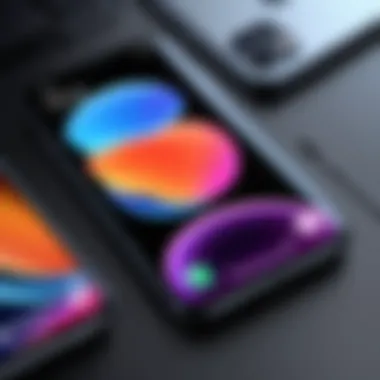
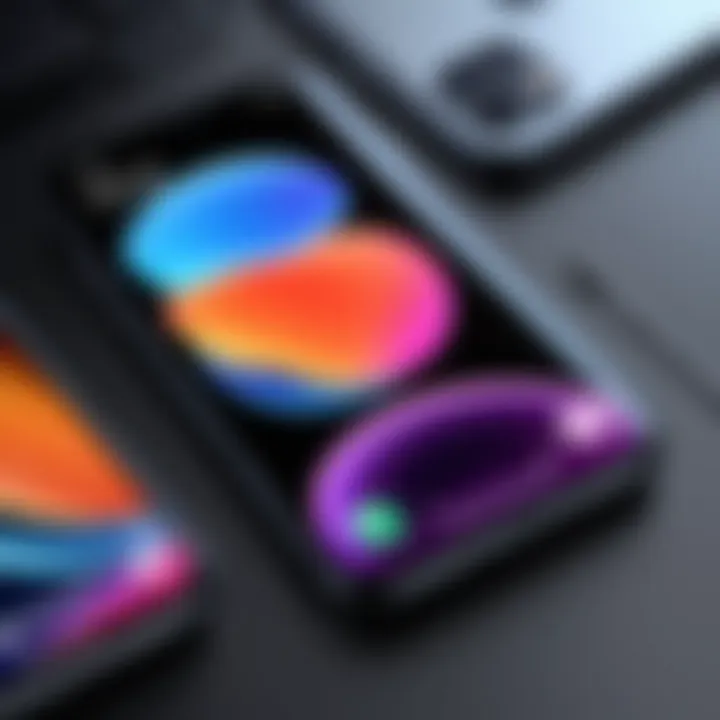
Intro
With the rapid pace at which technology evolves, understanding the nuances between cellular generations is crucial for consumers looking to invest wisely in mobile devices. In the realm of smartphones, Apple's iPhones have consistently led the market with cutting-edge features and performance. In this article, we're taking a closer look at how the leap from 4G to 5G affects Apple's lineup, guiding readers through key specifications, performance metrics, and broader implications for daily use.
Understanding the distinctions between 4G and 5G iPhones not only assists consumers in making informed decisions but also sheds light on the future of connectivity. This journey will encompass the underpinnings of these technologies, delve into their design elements, and explore how they cater to various use cases for different types of users. With this foundation, let's kick things off with a look at the technology that forms the backbone of these devices.
Prolusion to Cellular Technologies
Understanding cellular technologies is pertinent to grasping not just how we connect with devices today, but also how future innovations will shape our communication landscape. In this article, we will delve into the significance of mobile networks, particularly the evolution from 4G to 5G technologies. The rise of these advanced cellular networks has radically transformed our daily activities, enabling seamless connectivity and faster access to information.
With an undeniable impact on everything from social networking to streaming content, it's essential to comprehend the underlying changes in these technologies.
In the context of iPhones, which have consistently been at the forefront of mobile innovation, the comparison between 4G and 5G capabilities provides insight into how these advancements influence user experience and consumer choices.
The Evolution of Mobile Networks
When we look back at mobile networks, the timeline of development is remarkable. Starting from the rudimentary analog systems, which were more of a novelty than a necessity, we moved to digital networks, where 2G set the stage for text messaging and basic data services. Then, it was 3G that introduced significant improvements, paving the way for mobile internet and multimedia content.
However, it was 4G that truly revolutionized mobile technology. By offering high-speed data transmission, 4G networks allowed users to stream videos effortlessly and enjoy richer internet experiences on their devices. The adoption of LTE (Long-Term Evolution) became the gold standard for mobile data, but now we're witnessing a dramatic shift with the rollout of 5G technology. This meteoric rise to 5G promises even faster data rates and reduced latency, changing the way we interact with our devices.
The Role of iPhones in Technological Advancements
iPhones have not just followed the trends set by cellular technology; they've often set them. Apple has consistently leveraged advancements in mobile networks to enhance the user experience and redefine functionalities. With each new iPhone iteration, we're not merely getting new design or camera features, but also improved connectivity that utilizes the best of available networks.
As 5G becomes more widespread, iPhones are expected to innovate further, capitalizing on the reduced latency and increased network capacity. This means enhancing applications—like augmented reality and gaming—that demand real-time data exchange.
For the consumer, the importance of understanding these developments cannot be overstated. As technologies evolve, so do the functionalities and capabilities of iPhones. Being informed lets users capitalize on these advances, ensuring that they make savvy investments in their technology choices.
Understanding 4G Technology
Exploring 4G technology is crucial for grasping how mobile connectivity has transformed our daily interactions. As the fourth generation of mobile networks, 4G brought about significant enhancements over its predecessors. It introduced faster speeds, better efficiency, and a more stable connection, creating a foundation for a smoother mobile experience. For the tech-savvy user, understanding these aspects helps navigate both the capabilities and limitations of their devices in today’s interconnected society.
Key Features of 4G Networks
4G networks stand apart due to several key features that facilitate a more robust communication experience:
- Enhanced Data Transmission Speeds: 4G provides download speeds that can reach up to 100 Mbps, which significantly outpaces what was possible with 3G. This allows users to stream high-definition videos and download large files almost instantly.
- Improved Network Efficiency: Utilizing an all-IP (Internet Protocol) network structure means that 4G manages data more efficiently. This results in better signal quality and a more reliable connection in crowded areas.
- Lower Latency: With lower response times, typically around 20-30 milliseconds, users can enjoy seamless communication during calls or while engaging in online gaming, making everything feel more fluid.
- Wider Coverage: The deployment of 4G has expanded coverage into demographically diverse areas, ensuring more users can access mobile internet services even in less populated regions.
Overall, these features have made 4G the backbone of most mobile processes, allowing various applications to thrive and become part of everyday life.
Performance Metrics of 4G iPhones
In analyzing the performance of 4G iPhones, it’s essential to look at several metrics:
- Download and Upload Speeds: The performance is often gauged by real-world testing where the iPhone exhibits remarkable download speeds, particularly in urban environments where networks are optimally designed.
- Streaming Quality: With 4G, streaming music and video is smooth. Reviews frequently point out that even high-definition streams work flawlessly, with minimal buffering.
- Gaming Performance: For mobile gamers, 4G’s low latency is a game-changer. It allows for real-time feedback, which is critical in competitive gaming scenarios—players appreciate the edge this gives them compared to prior network generations.
- Battery Usage: Many users have noted that 4G enabled iPhones manage battery consumption well, balancing performance demands with energy efficiency, prolonging use throughout the day without constant recharging.
"With 4G technology, users often forget they are even on mobile data—it’s akin to having home broadband in the palm of your hand!"
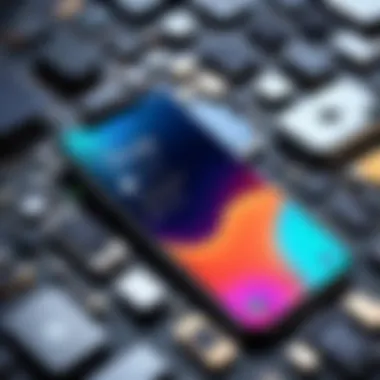
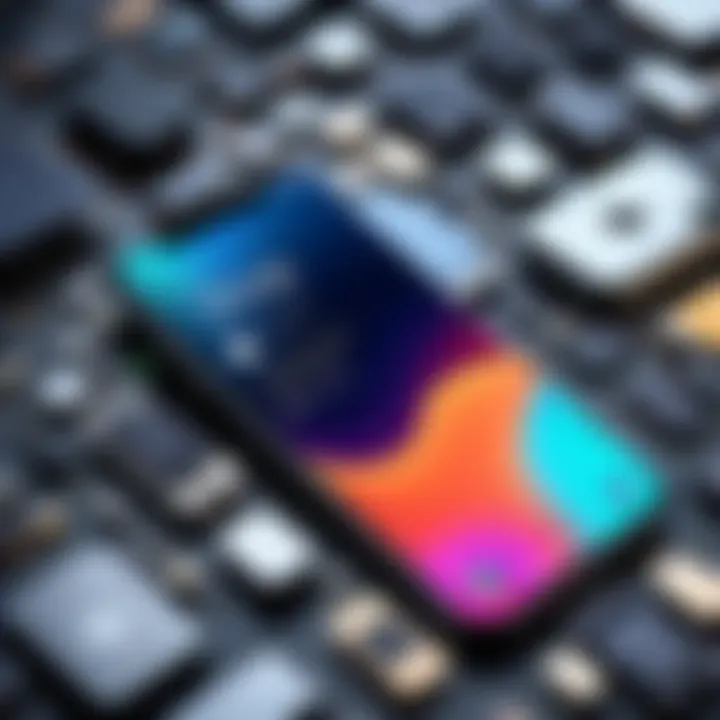
The combination of these performance metrics ensures that using a 4G iPhone is nothing short of a satisfying experience. The advancements in technology make it an indispensable tool for almost every facet of daily life.
Exploring 5G Technology
The expansion of mobile networks is ushering in a new era of connectivity, with 5G at the forefront. Understanding 5G technology is crucial for anyone looking to maximize the potential of their devices, especially iPhones. The fifth generation of mobile networks promises not only faster speeds, but also a host of capabilities that can reshape how we interact with technology in our everyday lives. In this section, we’ll explore what makes 5G stand out, the key characteristics of its networks, and how iPhones are set to leverage this technology for enhanced user experiences.
Characteristics of 5G Networks
5G is not just an upgrade from 4G; it’s a transformation that introduces several fundamental characteristics:
- faster data speeds: 5G networks can provide speeds that can reach up to 10 Gbps, which is significantly higher than 4G. This means quicker downloads, smoother streaming, and an overall improved browsing experience.
- low latency: One of the hallmarks of 5G technology is its ultra-low latency, often around 1 ms. This ensures that real-time applications, such as gaming or virtual reality, function seamlessly.
- massive connectivity: 5G has the capacity to support a vast number of devices per square kilometer, which is vital as the Internet of Things (IoT) continues to proliferate. This can facilitate everything from smart homes to connected vehicles.
"5G's characteristics will enable technologies and services that previous generations couldn't."
- improved reliability: The architecture of 5G networks fosters enhanced reliability for crucial applications where downtime is not an option, like in healthcare or emergency services.
- energy efficiency: Despite the increase in data and device connectivity, 5G is designed to be more energy-efficient, which can help reduce the carbon footprint associated with mobile communication.
These characteristics set the stage for iPhones that utilize 5G technology to offer not just incremental improvements, but transformational changes in how we engage with digital content and services.
Performance Metrics of 5G iPhones
When it comes to measuring the success of 5G iPhones, several performance metrics come into play:
- Download and Upload Speeds: With 5G connectivity, users can expect download speeds that are several times faster than those experienced with 4G. This is particularly beneficial when downloading large files or streaming high-definition content.
- Reliability and Consistency: Users of 5G iPhones will find that connections tend to be more stable, with fewer dropouts during calls or while using data-intensive applications.
- Battery Performance: Although 5G can consume more power, Apple engineers have worked diligently to optimize battery life on 5G enabled iPhones, ensuring users can stay connected longer without needing to charge frequently.
- Device Responsiveness: The reduced latency means actions performed on the device—like opening apps or loading web pages—can occur almost instantaneously, which makes for a smoother user experience.
Comparative Analysis: 4G vs 5G iPhones
When evaluating the landscape of mobile technology, particularly with Apple’s iPhones, a thorough comparative analysis between 4G and 5G networks becomes essential. The differences between these two generations of cellular technology highlight not only variations in speed and performance but also significant implications for everyday usage and future developments. This analysis serves as a guide for savvy consumers who seek to understand which generation of iPhone might best meet their needs and how emerging technology reshapes their digital lives.
Network Speed Comparison
Speed is often the first aspect that comes to mind when comparing 4G and 5G. 4G networks have significantly improved mobile browsing and download speeds compared to their predecessors, typically offering download speeds ranging from 5 to 100 Mbps. However, the introduction of 5G technology drastically changes the game, boasting download speeds that can potentially exceed 10 Gbps.
The impact on real-world use is quite profound. For instance, what might take several minutes to download over a 4G network can often occur in mere seconds with 5G. Large files, video calls, and high-quality streaming are all streamlined, providing a smoother experience. Users in bustling cities are likely to notice this difference most when they find themselves juggling multiple tasks that demand high bandwidth.
Latency and Response Times
Another critical factor to consider is latency. In layman’s terms, latency refers to the delay before a transfer of data begins following an instruction for its transfer. 4G networks typically have latency ranging from 30 to 50 milliseconds. In contrast, 5G networks aim for latency as low as 1 millisecond.
This reduction in latency can transform applications requiring real-time interactions – think online gaming, telemedicine, or virtual reality experiences. A gamer operating on a 5G connection may find themselves with an edge, while doctors conducting remote surgeries will require the reliability that 5G provides in its swift responsiveness.
"For every millisecond that matters, 5G stands to redefine how we communicate and interact with technology."
Coverage and Accessibility
While speed and latency are crucial, coverage remains an integral component of mobile technology. 4G networks enjoy extensive coverage and accessibility, particularly in rural areas. Many regions that have not yet transitioned to 5G may still rely on 4G for their primary mobile connectivity.
Conversely, the rollout of 5G is uneven, with urban areas receiving faster adoption rates than rural settings. This inconsistency is not just about speed; it raises questions about accessibility for various populations. Those in more remote locations may not reap the benefits of 5G immediately. Thus, individuals contemplating an upgrade should consider their locality’s infrastructure.
User Experience with 4G and 5G iPhones
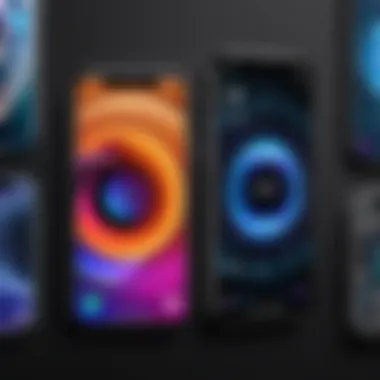
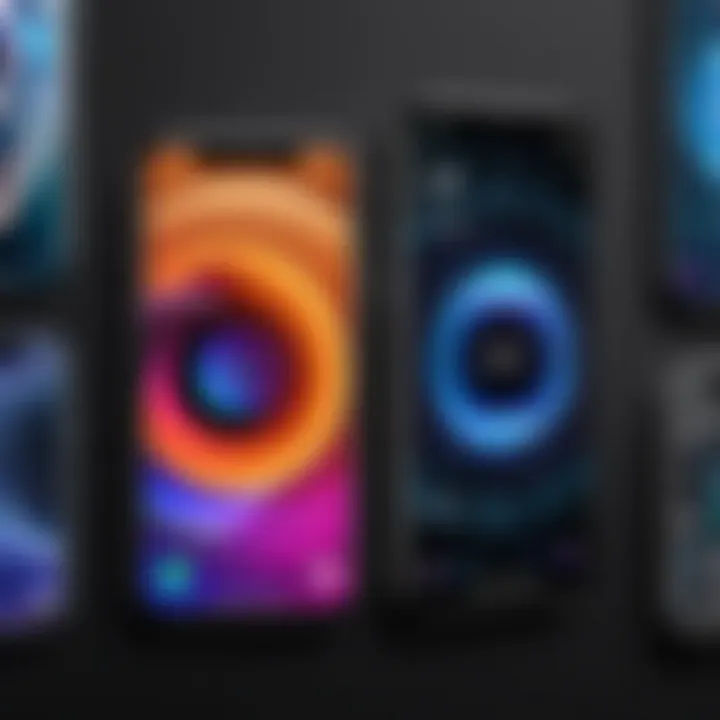
When we talk about user experience, particularly with 4G and 5G iPhones, we are diving into how these technologies shape everyday interactions. It's not just about numbers and tech specs; it’s about how these advancements translate into real-life usage. The significance of user experience can hardly be overstated, especially in an age where our phones serve as our primary portals to the world. Whether checking emails on the go, streaming the latest episodes of a favorite series, or joining a video call with friends, the network technology underlying these activities plays a crucial role in how smooth and fulfilling those experiences are.
Impacts on Daily Activities
The effects of 4G and 5G on our daily activities are evident in various ways. For someone using a 4G iPhone, activities like downloading a movie or accessing cloud-based services can often feel like wading through molasses. Slow response times and frustrating buffering can be the order of the day. Of course, many users get accustomed to this. But there is a noticeable difference when switching to a 5G iPhone. The leap in speed and reliability fosters a seamless experience that allows users to not only enjoy content but also maintain productivity without being derailed.
With 5G networks, users can download large files in seconds, engage in high-quality video conferencing without lag, and even explore augmented reality applications that require robust bandwidth. However, the impact of 4G versus 5G also extends to aspects like accessibility. For example, those relying on mobile devices for critical tasks, like accessing medical services or financial updates, will find 5G a game changer. Speed and reliability can dramatically reduce the time spent waiting for crucial information, making it easier to stay connected with the world.
"A slow connection can be the difference between a seamless conversation and a frustrating standstill."
Gaming and Streaming Considerations
Now, let’s get down to games and streaming - two activities where network capability is paramount. Gamers with 4G iPhones often deal with latency issues that can lead to a disjointed gaming experience. Imagine playing an online game and your character freezes for a split second; in a high-stakes situation, that can cost you dearly.
On the other hand, when playing on a 5G iPhone, the difference is palpable. The low latency and high bandwidth result in smoother gameplay, feeling almost instantaneous. For any competitive gamer, having that edge from a better connection can be the make or break moment.
For streaming users, 4G still holds its ground for many. While it's usable, the experience isn’t without hiccups. Buffering during peak hours can turn a relaxing evening into a series of interruptions. Switching to a 5G iPhone can alleviate these frustrations significantly. High-definition streaming with minimal buffering becomes the standard, allowing the user to enjoy uninterrupted shows and movies as they were meant to be experienced.
In summary, the user experience when switching between 4G and 5G iPhones goes beyond mere technology, impacting daily life and entertainment significantly. It's clear how much the advancement can change the way we engage with the world. As technology advances, understanding these nuances can make all the difference, keeping users informed and always connected.
Use Cases for 4G and 5G Technologies
In understanding mobile technology, it’s not enough to know the specifications or the theoretical capabilities of devices such as 4G and 5G iPhones. The real test lies in their practical applications. Use cases illustrate how these technologies influence our daily life, impacting work, entertainment, health, and societal dynamics. As we delve into this section, we will highlight the specific elements that define the utility, the benefits each technology provides, and the various considerations that need to be taken into account when assessing their applications.
Ideal Applications for 4G iPhones
4G technology has provided a solid foundation for mobile connectivity, and there are numerous applications where its capabilities shine the brightest. Here are a few key areas:
- Streaming Media: With its improved bandwidth, 4G allows users to stream high-definition video and music efficiently. Platforms like Netflix and Spotify have prospered under the 4G umbrella, enabling content consumption on the go without major hiccups.
- Social Media Engagement: The popularity of platforms such as Facebook and Twitter means users want real-time updates. The speed of 4G networks supports quick uploads and flawless image sharing, allowing social media enthusiasts to keep their feeds fresh, even while commuting.
- Mobile Gaming: Although not as swift as its successor, 4G has the means to handle many mobile games. Many gaming apps are developed with 4G in mind, offering smooth graphics and quick response times essential for the gaming community.
4G has consistently demonstrated its strength in day-to-day applications, making it a reliable choice for the average user. However, as technology leaps forward, many find themselves curious about the types of opportunities that 5G can offer.
Potential of 5G for Emerging Applications
5G has unlocked a new world of possibilities, pushing the boundaries of what we thought was achievable with mobile technology. The architecture of 5G networks promises lower latency, increased speeds, and greater device connectivity. Here are some promising applications set to benefit from 5G:
- Augmented Reality (AR) and Virtual Reality (VR): These technologies promise immersive experiences, and 5G's high speeds and low latency will turn that promise into reality. For instance, education could enhance learning environments where students engage in simulations that are interactive and immersive.
- Smart Cities: 5G provides the backbone for smart city solutions. Streetlights, trash bins, public transportation, and many other infrastructures can be connected and managed more effectively, improving efficiency and citizen services. People could receive real-time updates on traffic patterns or air quality.
- Telemedicine: Especially highlighted during the pandemic, telemedicine has emerged as a crucial field. 5G can elevate this service to new levels, allowing virtual consultations and remote surgeries to be conducted with unprecedented clarity and responsiveness.
"The future is not just about having a faster connection but about the profound changes that connection can bring to society and networking."
To summarize, understanding the use cases for both 4G and 5G technologies gives insight into how they shape our lives. Whether it's the consistent streaming experience admired by media consumers or the disruptive potential of 5G in areas like healthcare and urban planning, both generations of iPhones are stepping stones to a more connected future.
Challenges and Limitations
Topics surrounding the challenges and limitations of both 4G and 5G technologies are crucial for understanding the landscape of mobile connectivity as a whole. While advancements in these technologies have brought about significant improvements in speed and connectivity, they also come with their own sets of hurdles. This section unfolds the intricate challenges and distinct limitations each network faces, providing a clearer picture for consumers and tech enthusiasts alike.
Limitations of 4G Technology
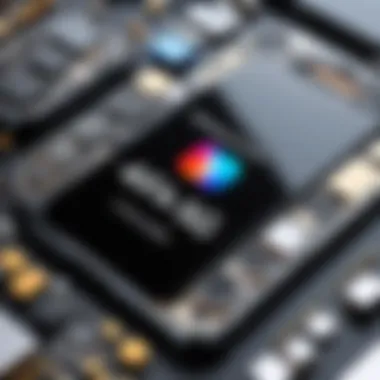
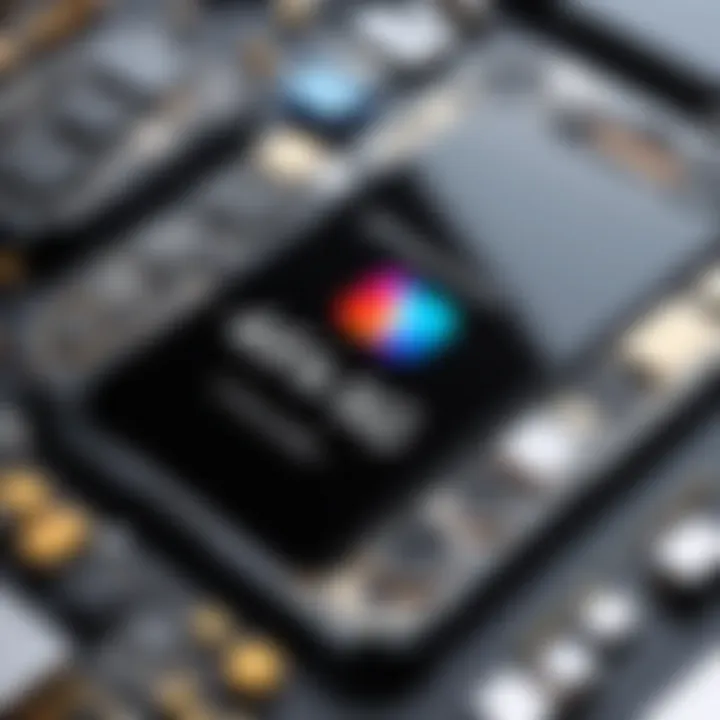
4G technology, while revolutionary at its launch, is not without its constraints. These limitations can impact user experiences in various ways:
- Limited Bandwidth: As more users connect to the network, the available bandwidth diminishes, leading to slower speeds. In regions with high mobile usage, this can become more pronounced.
- Geographical Limitations: 4G networks are often limited in terms of coverage, particularly in rural or less populated areas. Users in these locations may find reliable connectivity a constant challenge.
- Inconsistency in Speed: Users may experience fluctuating speeds depending on the time of day and the density of users in a specific area. The promise of faster download times can fall flat during peak hours.
- No True Low Latency: Although 4G provides decent latency, it still cannot match the ultra-low latency promised by its successor, 5G. For applications requiring instantaneous response, this can be a drawback.
- Energy Consumption: Devices utilizing 4G may consume more battery than intended due to constant searching for signals in areas of weak coverage, leading to more frequent recharges.
These limitations underscore the fact that while 4G has laid a robust foundation for modern mobile networks, its growing inadequacies signal a pressing need for advancements.
Challenges Facing 5G Deployment
As the industry shifts focus to 5G, various challenges emerge, hindering its full-scale deployment:
- Infrastructure Requirement: 5G networks rely on a dense infrastructure of small cells, which are often more expensive and time-consuming to install than previous generations. Urban areas face challenges regarding zoning laws and physical space for these installations.
- Spectrum Availability: Access to the frequency bands that will support 5G is a contentious issue. Governments are still in the process of reallocating spectrum from other uses, which can delay deployment timelines.
- Compatibility Issues: Many existing devices cannot take advantage of 5G capabilities without hardware updates. As manufacturers push for newer 5G models, some users may feel left behind, unable to upgrade due to financial or other constraints.
- Security Concerns: Increased connectivity raises the stakes for cybersecurity. 5G's faster speeds and wider reach could potentially expose user data to greater risk if adequate security measures aren't in place.
- Physical Barriers: 5G signals, particularly those in higher frequency bands, face challenges penetrating buildings and other physical obstacles. This could lead to inconsistent coverage even in urban areas where signals are expected to be strong.
"5G is revolutionizing connectivity, but it must overcome significant hurdles to reach its full potential."
In summary, understanding the challenges and limitations of both 4G and 5G provides critical context for how mobile networks impact daily life. It compels users to consider their specific needs in technology use, especially as the landscape continues to evolve. These factors must be weighed carefully when making decisions regarding mobile devices or anticipating future connectivity experiences.
Future of Mobile Networks
As we stand at a crossroads in mobile technology, the future of mobile networks cultivates both excitement and uncertainty. It’s vital to understand how advancements like 5G and the forthcoming 6G may reshape not only the devices we use but also the entire spectrum of digital communications. In the context of this article, examining the future of mobile networks serves to enlighten readers about the forthcoming transformations that can affect their choices and lifestyles. With wireless connectivity expanding its reach, it's crucial to consider how these advancements will influence industries, social interactions, and day-to-day activities.
Anticipated Developments in 5G Technology
5G technology is not just an incremental upgrade from 4G; it's a monumental leap that promises to redefine how we connect and interact. The anticipated developments include enhancements in speed, capacity, and efficiency.
- Increased Data Speeds: 5G is expected to deliver speeds as high as 10 Gbps, which is up to 100 times faster than 4G. This will allow users to download entire seasons of a TV series within minutes, making streaming seamless and quick.
- Higher Capacity: The architecture of 5G will facilitate connecting up to one million devices per square kilometer. This capability is particularly pertinent in crowded urban areas where connectivity demands are higher.
- Ultra-Low Latency: This development will usher in real-time responsiveness, which is paramount for applications like autonomous driving and remote surgeries. A decrease in latency to as low as 1 ms will mean near-instantaneous data transfer.
In addition to these, advancements in technologies such as Massive MIMO (Multiple Input Multiple Output) and edge computing will further enhance the efficiency and performance of 5G, allowing network resources to be utilized more effectively.
"The transformational potential of 5G goes beyond mere speed; it’s a catalyst for innovation across sectors such as healthcare, transportation, and entertainment."
Prospects for 6G and Beyond
While 5G is still rolling out, conversations around 6G are gaining momentum. Although it's early days, projections suggest that 6G could be operational by 2030, bringing even more radical changes.
- Frequencies Beyond 100 GHz: 6G could harness higher frequency bands that haven’t been used before, providing unprecedented speed and capacity.
- AI and Machine Learning Integration: The incorporation of advanced AI algorithms could make networks smarter, adapting to user needs in real-time and optimizing data flow.
- Ubiquitous Connectivity: The vision is a world where connections are available everywhere at all times. Imagine a scenario where no area is left behind in terms of connectivity, ensuring that even remote locations have access to high-speed internet.
With development possibilities ranging from holographic communications to fully immersive virtual environments, the outlook for mobile technology suggests a future that's not merely an extension of what we have but a complete reimagining.
Ending
In the rapidly changing landscape of mobile technology, understanding the differences between 4G and 5G iPhones is vital. Consumers today are faced with numerous choices, and knowing the implications of these advancements allows for smarter investments in technology. With features that prioritize speed, connectivity, and overall user experience, these devices are at the forefront of a new era in communication.
Summarizing Key Differences
When we look at 4G and 5G iPhones, there are several striking distinctions worth noting:
- Speed & Performance: 5G networks offer significantly higher speeds compared to 4G. This provides users with quicker downloads and more seamless experiences in activities that involve data-intensive tasks like streaming and gaming.
- Latency: The reduction in latency with 5G networks is nothing short of revolutionary. This means that actions taken on a device are processed almost instantly, enhancing user experience especially in real-time applications such as online gaming or video conferencing.
- Coverage: While 4G has achieved expansive coverage, 5G is still in its rollout phase. This means availability can be spotty depending on the region, which is crucial for potential buyers to consider when choosing their next iPhone.
In light of these differences, it's clear that the shift from 4G to 5G is not merely about speed but also encompasses broader implications for how we utilize mobile technology.
Making Informed Choices
As consumers, making decisions about technology can sometimes feel like a maze. Here are some important considerations:
- Assess Your Needs: If you primarily use your iPhone for basic tasks like calls and texting, a 4G device may meet your needs adequately. However, for those who often download large files, stream 4K content, or require fast internet connections for work or gaming, investing in a 5G iPhone might be worth it.
- Future-Proofing Your Investment: With the gradual expansion of 5G networks, choosing a 5G iPhone might provide better longevity as technology progresses. You might find that having a device capable of supporting upcoming standards and applications proves to be a wise choice in the long run.
- Budget Considerations: 5G iPhones come at a premium. It's essential to weigh the costs against the expected advantages. Sometimes, holding off on the latest model might allow for a better upgrade in a few years when technology has evolved further.







